Recent Posts
SERVPRO® of Jefferson, Franklin and Perry Counties can help you understand mold
2/11/2025 (Permalink)
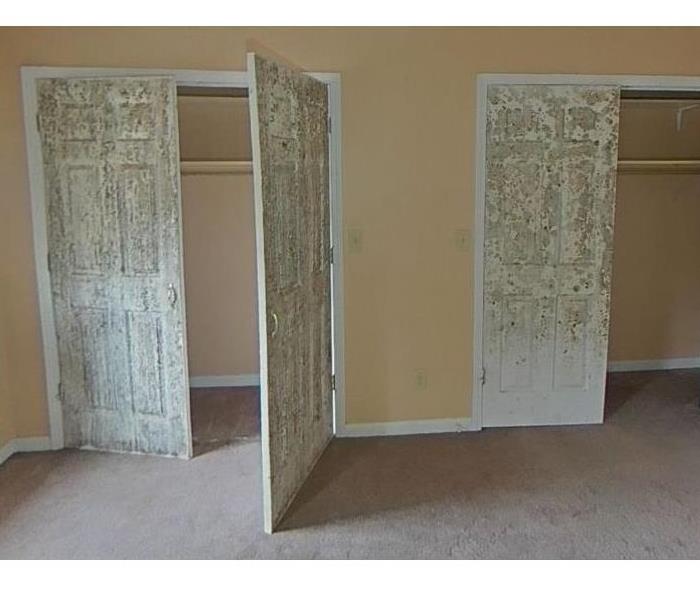 When this house was purchased, the owners knew it had a mold problem, so they called SERVPRO to come remediate all the damage.
When this house was purchased, the owners knew it had a mold problem, so they called SERVPRO to come remediate all the damage.
When you spot what you suspect might be the presence of mold in your home or business, it's hard to know where to turn.
Let the restoration experts at SERVPRO of Jefferson, Franklin and Perry Counties help you determine if you have a mold problem, and if you do, what steps you can take to remediate the issue.
When you call the professionals at SERVPRO® for information about our mold remediation services, our technicians will thoroughly assess and inspect your property for visible mold signs. They use various techniques to detect the presence of mold and possible hidden water sources. If mold is found, SERVPRO works with you through the cleanup, repair, and remediation process with as little disruption as possible.
We work closely with you to help you understand the entire process, providing you with knowledgeable and effective solutions. Trust SERVPRO to help you when you need us the most.
Storm damage? Call the experts at SERVPRO®!
1/2/2025 (Permalink)
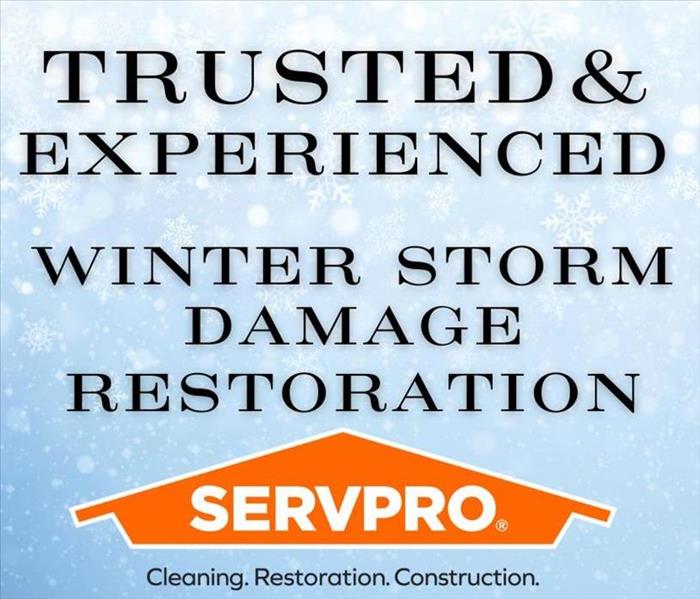 When winter weather strikes, trust SERVPRO of Jefferson, Franklin and Perry Counties to help you.
When winter weather strikes, trust SERVPRO of Jefferson, Franklin and Perry Counties to help you.
Regardless of the season or the type of storm, SERVPRO of Jefferson, Franklin and Perry Counties is your trusted source for storm damage restoration.
Our team of highly trained and certified professionals are available 24/7 for emergency services.
Whether it's a spring flood, or a winter ice storm, each natural disaster brings its own type of devastation and damage. SERVPRO’s storm damage clean-up experts are Faster to any size disaster™. Our proprietary cleaning solutions, advanced equipment, and decades of experience will help return your property to preloss condition.
We not only offer water mitigation services, but we can stabilize the building by tarping the roof and boarding up damaged areas. Once the cleanup is complete, we have a reconstruction team ready to put it all back together for you.
We can also help you navigate the insurance process for a faster, easier claim process.
When you need help - no matter the season - SERVPRO of Jefferson, Franklin and Perry Counties will make it our mission to serve you.
Let us help you remediate mold
11/4/2024 (Permalink)
Mold is everywhere, which means there is no way to "remove" mold from your house, but our professionally trained technicians at SERVPRO of Jefferson, Franklin and Perry Counties can work to remediate the issue.
With more than 50 years of experience, SERVPRO understands the science of mold. We will work with you to find a trained industrial hygienist to determine if you have the presence of mold in your home or business, then come up with a plan to remediate the problem, if there is one.
Finding mold in your home or business can be troubling, and it’s natural to want to get rid of it fast. Because mold spreads fast and can sometimes be inconspicuous, it’s best to call SERVPRO and let us help you.
We're Always Here to Help You!
11/4/2024 (Permalink)
 Whether it's a fire clean or water damage, the SERVPRO team makes it a mission to help you recover.
Whether it's a fire clean or water damage, the SERVPRO team makes it a mission to help you recover.
We understand the trauma and feeling of loss that comes when your home or business are affected by a disaster or catastrophic event.
The team at SERVPRO of Jefferson, Franklin and Perry Counties is not only trained in remediation and restoration techniques, but we focus on making you the WHY of what we do every single day.
For us, it's about more than just business because we realize we're in the business of helping people recover from disaster, whether it's a water leak or a full fire clean. Our teams are specially trained in empathy, understanding and compassion, and our mission is always to do whatever it takes to help you.
As one customer said, "They immediately put my mind at ease during an extremely stressful situation."
When it comes to SERVPRO, we care about helping you, and that is what makes us different.
SERVPRO cleans mold-, mildew-damaged contents
9/9/2024 (Permalink)
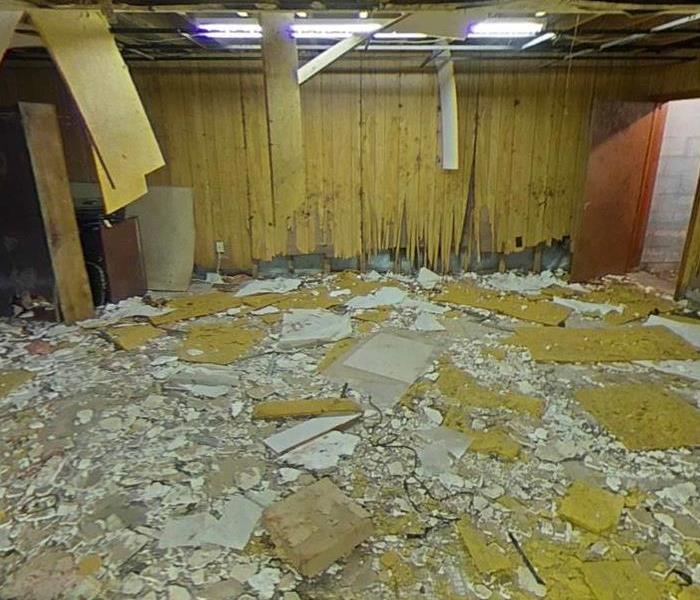 SERVPRO of Jefferson, Franklin and Perry Counties is an experienced and trusted mold remediation expert.
SERVPRO of Jefferson, Franklin and Perry Counties is an experienced and trusted mold remediation expert.
When you discover mold or mildew in your home or business, the microbial growth doesn't discriminate between the structure and the contents within.
SERVPRO of Jefferson, Franklin and Perry Counties offers an in-house content cleaning division that can help restore contents damaged by mold.
We will assess and test your contents to determine what items can be restored back to their preloss condition, and utilizing various restoration methods in our cleaning process, we will work to try to save as many as possible.
From electronics to documents and from soft goods to furniture, SERVPRO of Jefferson, Franklin and Perry Counties is a trusted industry leader when it comes to mold remediation.
Call SERVPRO of Jefferson, Franklin and Perry Counties for a mold assessment and evaluation. Let us help you make it Like it Never Even Happened.
SERVPRO of Jefferson, Franklin and Perry Counties is a trusted expert in fire restoration
9/9/2024 (Permalink)
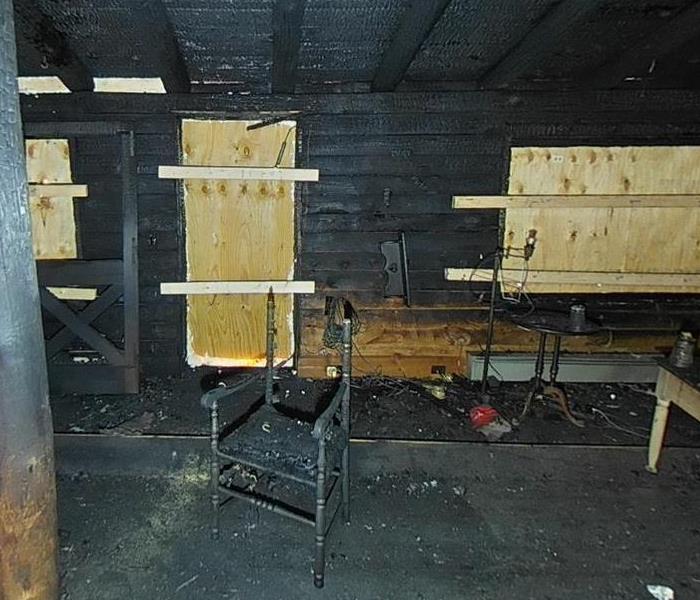 SERVPRO restored this log home after a fire nearly decimated the home.
SERVPRO restored this log home after a fire nearly decimated the home.
In the moments after fire damages your home or business, it's hard to know where to turn for trusted advice and professional service.
With more than five decades of industry experience, SERVPRO of Jefferson, Franklin and Perry Counties can provide a trusted voice during the emotional moments surrounding a fire in your home or business.
When SERVPRO arrives, technicians will begin implementing a fire damage reconstruction process. Whether you require smoke damage restoration for a single room, or full-scale construction services, SERVPRO technicians are prepared to implement an industry-tested plan, working hand in hand with you and your insurance company.
In 2022, Illinois fire departments responded to more than 1.4 million incidents that caused the loss of 92 lives and more than $476 million in property damage, according to the Office of the Illinois State Fire Marshal.
After experiencing fire damage, time is of the essence. While safety is your No. 1 priority, handling subsequent cleanup, restoration, and construction efforts can seem daunting. SERVPRO of Jefferson, Franklin and Perry Counties will handle everything during the cleanup job, from initial assessment to construction, helping to ensure the property is restored to pre-fire condition.
Call SERVPRO of Jefferson, Franklin and Perry Counties as soon as the firefighters are finished, and let us help make it "Like it never even happened."
Trust SERVPRO of Jefferson, Franklin and Perry Counties to handle water damage
8/20/2024 (Permalink)
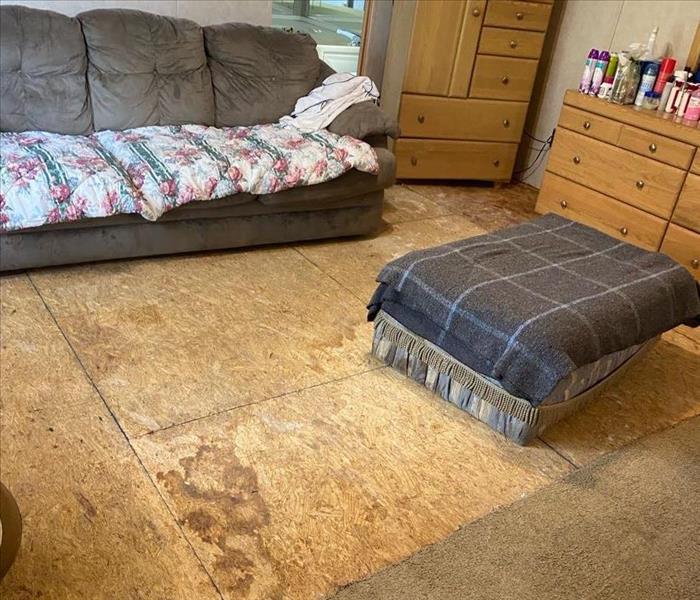 From homes to businesses, you can trust SERVPRO to handle any-size water disaster.
From homes to businesses, you can trust SERVPRO to handle any-size water disaster.
Water is a part of life. It can be beautiful, but it can also be destructive, especially when it creates a disaster in your home or business.
SERVPRO of Jefferson, Franklin and Perry Counties has the expertise and equipment to remove water, dry out the structure, and build your home or business back to preloss condition.
You can trust SERVPRO of Jefferson, Franklin and Perry Counties to respond quickly to mitigate the damage.
Once our team arrives at your home or business, our trained professionals will assess the water damage and explain the severity of the damage. We will talk you through the restoration process, and if necessary, we will also assist with stopping the source of the water damage. Our industry-trained team members will create a plan of action to successfully restore your property.
We have the capability to handle any-size water disaster. From homes to schools and from commercial warehouses to apartment complexes, we'll be there with a team ready to meet your needs.
When water damage occurs, call SERVPRO!
6/27/2024 (Permalink)
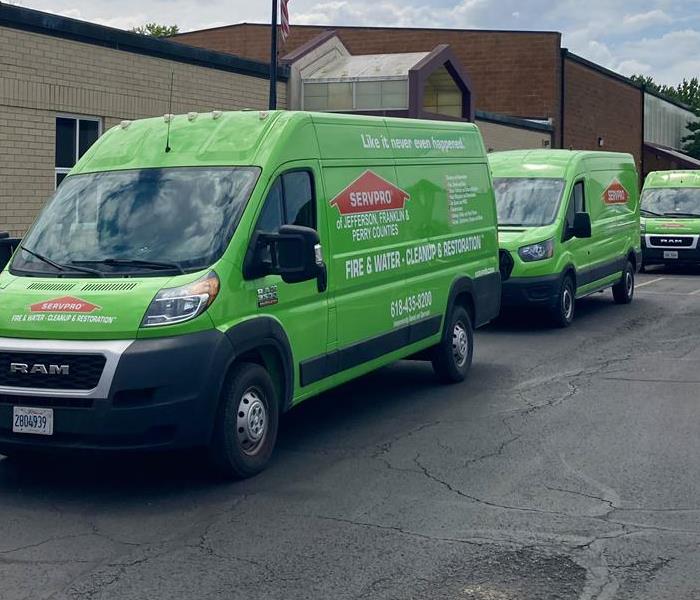 SERVPRO Vans in Parking lot
SERVPRO Vans in Parking lot
The professionals at SERVPRO® of Jefferson, Franklin and Perry Counties are here if you find yourself with water damage.
With water sources at your sink, dishwasher and refrigerator there are several ways for water to affect areas that you might not be able to see.
Water can run behind base cabinets or under your refrigerator and can be virtually undetectable for some time.
Did you know that SERVPRO can potentially save solid floors if water damage is caught quickly enough? With a dry mat system that is able to extract water through the floors before water begins to warp and twist flooring. This means a tremendous amount of money saved on a claim as we can restore those floors rather than replace all of them.
SERVPRO of Jefferson, Franklin and Perry Counties does more than just repair homes or businesses from water damage. Call us today at 618-435-8200 or tell your insurance agent that you prefer SERVPRO!
Recovering From Flood Damage | SERVPRO of Jefferson, Franklin & Perry Counties
5/24/2024 (Permalink)
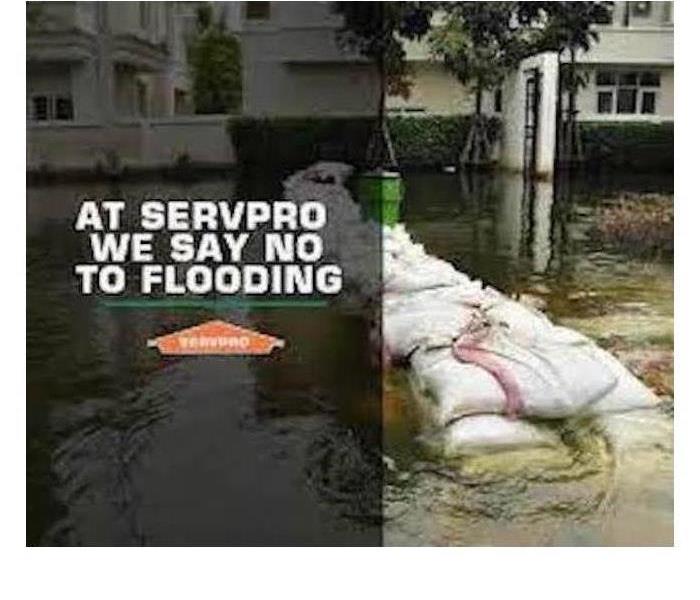 SERVPRO of Jefferson, Franklin & Perry Counties is here to help your home or business recover from flood damage
SERVPRO of Jefferson, Franklin & Perry Counties is here to help your home or business recover from flood damage
Floods can be devastating, leaving behind significant damage to homes and properties. In the aftermath of a flood, it's essential to prioritize safety and take appropriate steps to clean up and restore your property. As experts in flood damage restoration, we at SERVPRO of Jefferson, Franklin & Perry Counties understand the challenges homeowners and businesses face during this difficult time. In this comprehensive guide, we'll share valuable tips and insights on how to safely clean up after a flood, drawing from our experience and expertise in the field.
Safety First
Safety should always be the top priority when dealing with flood cleanup efforts. Before you begin, it's crucial to assess potential hazards and take necessary precautions to protect yourself and your family. Here are some essential safety tips to keep in mind:
- Assess the Risk: Before entering the flooded area, assess the risk of electrical hazards, structural damage, and contamination. If there's a risk of electric shock, turn off the power supply to the affected area before entering.
- Wear Protective Gear: Remember to wear appropriate protective gear, including rubber gloves, rubber boots, and safety goggles, to protect yourself from exposure to contaminated water and debris.
- Avoid Contaminated Water: Floodwater can be contaminated with bacteria, chemicals, and other hazardous substances. Avoid direct contact with floodwater and wash your hands thoroughly with soap and clean water if you come into contact with it.
- Use Caution Around Debris: Be cautious when navigating through the flooded area, as debris and other objects may be submerged and pose tripping hazards.
- Seek Professional Help: If the damage is extensive or if you're unsure about how to safely proceed, seek professional assistance from a qualified flood damage restoration company like SERVPRO of Jefferson, Franklin & Perry Counties
Assessing the Damage
Once you've ensured your safety, the next step is to assess the extent of the damage caused by the flood. A thorough assessment will help you develop a plan for cleanup and restoration. Here's how to assess the damage effectively:
- Inspect the Structure: Carefully inspect the structure of your home, including walls, floors, ceilings, and foundation, for signs of damage such as cracks, warping, or shifting.
- Check Utilities: Inspect electrical, plumbing, and HVAC systems for damage. If you suspect any damage to these utilities, refrain from using them until they've been inspected and repaired by a qualified professional.
- Document the Damage: Take photographs and videos of the damage to document the extent of the flood damage for insurance purposes. Make a detailed inventory of damaged items and belongings.
Removing Water and Debris
Once you've assessed the damage, the next step is water damage restoration. Prompt removal of standing water is essential to prevent further damage and minimize the risk of mold growth. Here's how to safely remove water and debris:
- Use Pumps and Wet/Dry Vacuums: Use pumps, wet/dry vacuums, or buckets to remove standing water from the flooded area. Start by removing as much water as possible to speed up the drying process.
- Dispose of Debris: Remove debris, mud, and silt from the flooded area using shovels, rakes, and wheelbarrows. Dispose of debris properly according to local regulations.
- Clean and Sanitize: Thoroughly clean and sanitize the affected area to remove any remaining dirt, bacteria, and contaminants. Use disinfectants and cleaning solutions recommended for flood cleanup.
- Dry Thoroughly: Use fans, dehumidifiers, and open windows to facilitate drying and ventilation. Ensure that the affected area is completely dry to prevent mold growth and further damage.
Cleaning and Disinfecting
After removing water and debris, it's essential to clean and disinfect the affected area to eliminate bacteria, mold, and other contaminants. Here are some tips for cleaning and disinfecting after a flood:
- Clean Surfaces: Clean and scrub all surfaces, including walls, floors, and furniture, with soap and water to remove dirt and debris. Use brushes, mops, and sponges to scrub stubborn stains and residues.
- Disinfect: Use disinfectants and antimicrobial solutions to kill bacteria, mold, and other pathogens. Pay special attention to areas that came into contact with floodwater, such as floors, walls, and appliances.
- Launder Fabrics: Wash and disinfect clothing, bedding, and other fabric items that have been exposed to floodwater. Use hot water and laundry detergent to kill bacteria and remove contaminants.
- Clean HVAC Systems: Clean and disinfect HVAC systems, including air ducts, vents, and filters, to prevent the spread of mold and contaminants throughout the home.
- Clean and Sanitize Belongings: Clean and sanitize belongings, furniture, and household items that have been affected by floodwater. Use appropriate cleaning products and techniques for different materials.
Restoring and Repairing
Once the cleanup and disinfection process is complete, the next step is to restore and repair the damage caused by the flood. Depending on the extent of the damage, restoration may involve structural repairs, electrical work, and mold remediation. Here's how to restore and repair your home after a flood:
- Structural Repairs: Assess the structural integrity of your home and address any damage to walls, floors, ceilings, and foundation. Hire a qualified contractor to perform structural repairs as needed.
- Electrical Work: Have electrical systems inspected and repaired by a licensed electrician to ensure safety and compliance with building codes. Replace damaged wiring, outlets, and electrical appliances as needed.
- Mold Remediation: If mold is present in your home, hire a professional mold remediation company to safely remove and remediate mold growth. Mold can pose serious health risks and should be addressed promptly and thoroughly.
- Replace Damaged Items: Replace or repair damaged items and belongings that cannot be salvaged or restored. This may include furniture, appliances, flooring, and personal belongings.
Preventative Measures
After completing the cleanup and restoration process, it's important to take proactive measures to prevent future flooding and water damage. Here are some preventative measures you can take to protect your home:
- Install Flood Barriers: Consider installing flood barriers or flood gates to prevent water from entering your home during heavy rain or flooding events.
- Elevate Utilities: Elevate electrical panels, HVAC systems, and other utilities above potential flood levels to minimize damage in the event of a flood.
- Seal Cracks and Openings: Seal cracks and openings in your home's foundation, walls, and windows to prevent water infiltration during storms.
- Maintain Gutters and Drains: Keep gutters and downspouts clear of debris to ensure proper drainage away from your home. Maintain and clean storm drains to prevent backups and flooding.
- Invest in Flood Insurance: Consider purchasing flood insurance to protect your home and belongings in the event of a flood. Standard homeowners insurance policies typically do not cover flood damage.
Conclusion
Cleaning up after a flood can be a daunting and challenging task, but with the right knowledge and preparation, you can safely restore your home and protect your family's health and safety. By prioritizing safety, assessing the damage, removing water and debris, cleaning and disinfecting, restoring and repairing, and taking preventative measures, you can navigate the cleanup process effectively and minimize the risk of further damage. Remember, if you're unsure about how to safely proceed or if the damage is extensive, don't hesitate to seek professional assistance from a qualified flood damage restoration company like SERVPRO of Jefferson, Franklin & Perry Counties. We are here to help restore your home or business from flood damage.
A Comprehensive Approach to Fire Damage Restoration | SERVPRO of Jefferson, Franklin & Perry Counties
4/19/2024 (Permalink)
 Trust SERVPRO of Jefferson, Franklin & Perry Counties' comprehensive approach to fire damage restoration
Trust SERVPRO of Jefferson, Franklin & Perry Counties' comprehensive approach to fire damage restoration
In the wake of a fire damage event, the physical devastation left behind can be overwhelming. SERVPRO of Jefferson, Franklin & Perry Counties is here to help answer all of your concerns, rebuilding lives and restoring homes and businesses. With a diligent approach grounded in expertise and empathy, SERVPRO of Jefferson, Franklin & Perry Counties goes above and beyond to bring comfort and renewal to those affected by fire damage.
Understanding the Impact
Before diving into the fire damage restoration process, we recognize the profound impact that fire damage can have on individuals, families and businesses. It's not just about repairing structures; it's about healing hearts and minds. Thus, the first step is always to empathetically assess the situation, listening to the concerns and needs of the clients with compassion and understanding.
Swift Response and Assessment
Time is of the essence in fire damage restoration. With every passing moment, the damage can escalate, making restoration more challenging and costly. We understand this urgency and operate with efficiency and speed. Upon receiving a call for assistance, our team swiftly mobilizes, arriving at the site promptly to assess the extent of the damage. Utilizing advanced technology and years of expertise, we conduct a thorough evaluation, identifying not only visible damage but also potential hidden issues such as water damage from firefighting efforts or structural compromise.
Tailored Restoration Plan
Once the assessment is complete, a customized restoration plan tailored to the specific needs of the property and its occupants. This plan outlines the steps necessary to mitigate damage, salvage belongings, and restore the property to its pre-fire condition. Transparency is key, and clients are kept informed at every stage of the process, ensuring peace of mind amidst the chaos.
Comprehensive Cleanup and Restoration
With a clear plan in place, SERVPRO of Jefferson, Franklin & Perry Counties' team gets to work, employing state-of-the-art equipment and industry-best practices to execute the restoration process meticulously. From removing debris and soot to addressing water damage as well as smoke and odor removal, no detail is overlooked. Every surface is cleaned, every corner inspected, and every effort made to ensure thorough restoration.
Salvaging Belongings
One of the most heartbreaking aspects of fire damage is the loss of cherished belongings. Recognizing the sentimental value attached to these items, we employ specialized techniques and equipment to salvage and restore as much as we possibly can. Whether it's family heirlooms, photographs, or important documents, our team works tirelessly to bring these items back to life.
Reconstruction and Renovation
Once the cleanup and salvage efforts are complete, the focus shifts to reconstruction and renovation. Whether it's repairing structural damage, replacing flooring and drywall, or rebuilding entire sections of the property, our skilled employees approach each task with precision and care. The goal is not just to rebuild the physical structure but to restore a sense of normalcy and security to the lives of those affected.
Constant Communication and Support
Throughout the entire restoration process, SERVPRO of Jefferson, Franklin & Perry Counties maintains open lines of communication with clients, providing regular updates on progress and addressing any concerns or questions that may arise. Our team understands the emotional toll of fire damage and strives to provide not just exceptional service, but genuine support and reassurance every step of the way.
Going Above and Beyond
What sets us apart is our unwavering commitment to excellence and our dedication to going above and beyond for our clients. From our rapid response times to our meticulous attention to detail, every aspect of our service is infused with a sense of compassion and professionalism.
 When this house was purchased, the owners knew it had a mold problem, so they called SERVPRO to come remediate all the damage.
When this house was purchased, the owners knew it had a mold problem, so they called SERVPRO to come remediate all the damage.




 24/7 Emergency Service
24/7 Emergency Service






